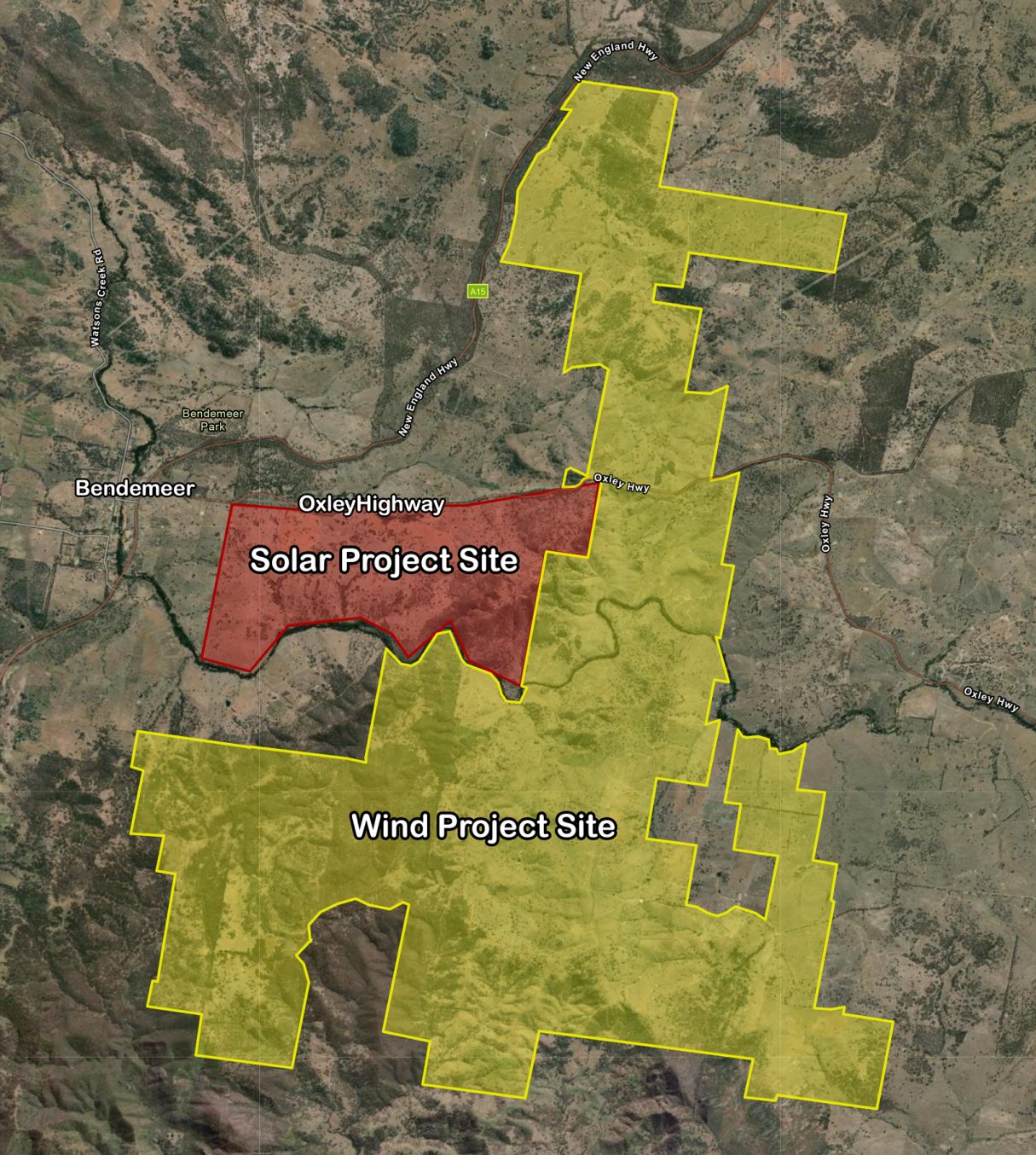The Bendemeer Renewable Energy Hub wind project will create a range of social and economic opportunities for the Bendemeer region and local surrounding areas, as well as creating environmental benefits for the New England region to build a sustainable future with renewable energy.
The proposed wind farm will generate an estimated 950,000 MWh of renewable energy, and reduce greenhouse gas emissions by 690,000 tonnes CO2, per year. For scale, the project will generate enough energy equivalent to powering 120,000 NSW homes!
There are approximately 58 turbines currently proposed for the wind farm. Each wind turbine will have an indicative height from ground to hub of 169m, and a height of 250m from ground to blade tip of the turbine. The project nameplate rating is 360 MW.
Please note that the proposed wind project is in the preliminary stages of planning. All information will be updated as the project progresses, and will based on outcomes of consultation with NSW DPE, future detailed environmental studies, wind data analysis, constructability reviews and ongoing neighbour and community consultation.
Map
Please note: The wind project layout is preliminary only and developed prior to the Project Scoping Report submission to NSW DPE. The turbine locations and quantities and the location of road and transmission infrastructure shall be revised during the EIS phase. This will be based on the outcomes of consultation with NSW DPE, future detailed environmental studies, wind data analysis, constructability reviews and ongoing neighbour and community consultation.

Facts

FAQs
The Bendemeer Renewable Energy Hub team have created a space for Frequently Asked Questions about the wind project asked by the community to be answered all in one place. The FAQ page can also be found in the Wind Fact Book that has been developed for the solar project to give community members and residents a greater understanding of the project. These books will be updated as the projects progress.
An online copy of the fact book can be found here – Wind Fact Book
If you have any questions of queries regarding the wind project, please get in touch with the BREH team.

Project Timeline
The approximate timeline for the wind project is listed below, and will be updated as necessary as the project progresses.
All information regarding the wind project, including documentation related to each stage of the process, will be available in the process updates section below
Additionally, you can access information regarding the project on the NSW Government’s Major Projects Planning Portal.
Site Identification
Site Identification
Comprehensive analysis of wind and solar resources, environmental and engineering constraints, and proximity to electricity grid, services and infrastructure.
Commencement – 2019
Execution of Land Agreements – June 2022
Planning and Approvals
All State Significant developments are required to prepare a comprehensive Environmental Impact Statement to ensure the project achieves an appropriate balance between environmental, social and economic considerations and is in the public interest.
Scoping Report submitted – early 2024
SEARS Received – early 2024
EIS Submission – end of 2024
Public Exhibition – end of 2024
Assessment – early 2025
Determination – June 2025
Wind Monitoring Campaign
Comprehensive site specific wind monitoring campaign installed and managed by specialised and experienced consultants.
LiDAR installed – December 2022
Met Mast installed – June 2023
Preliminary Campaign Completion – end of 2024
Grid Connection Approvals
Expected 2027
Financial Close
All financing agreements are executed, Engineering Procurement and Consturction contracts are awared and any conditions precedent for financing are met so that construction may commence.
Expected 2027
Construction
Undertaking all required completion and commissioning tests to connect the project to the electricity grid and participate in the National Electricity Market.
2028
Commissioning and Operation
Undertaking all required completion and commissioning tests to connect the project to the electricity grid and participiate in the National Electricity Market.
2029-2030
Recommissioning or Decommissioning
The project life is approximately 30 years. At this time feasibility studies and landholder consultation would be undertaken to determine if the project is to be recommissioned (rebuilt with latest technology at the time) or decommissioned, components recycled and the land rehabilitated to its pre-existing condition.
2059
